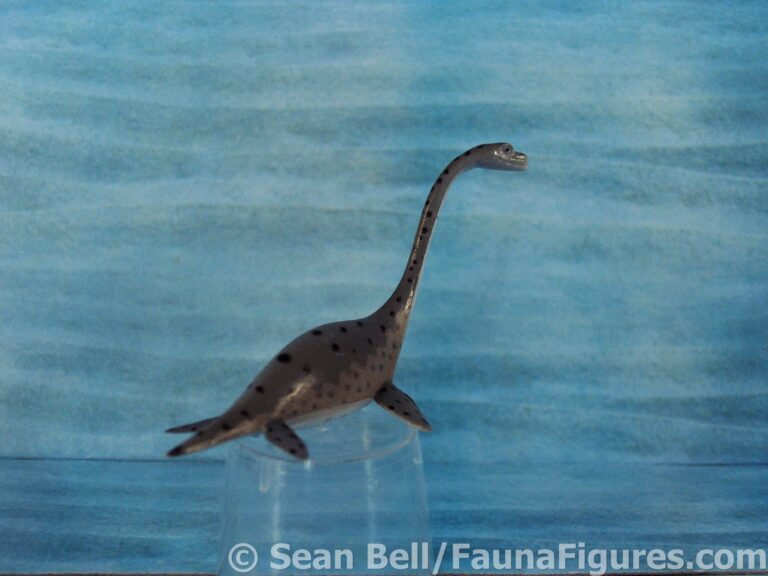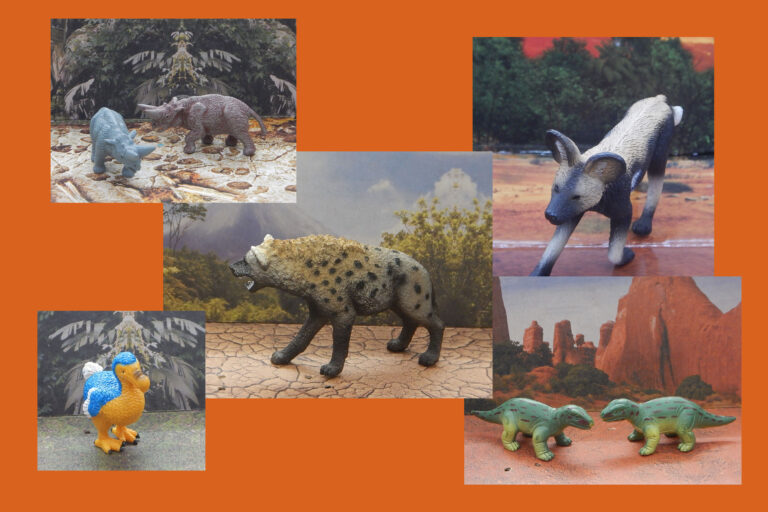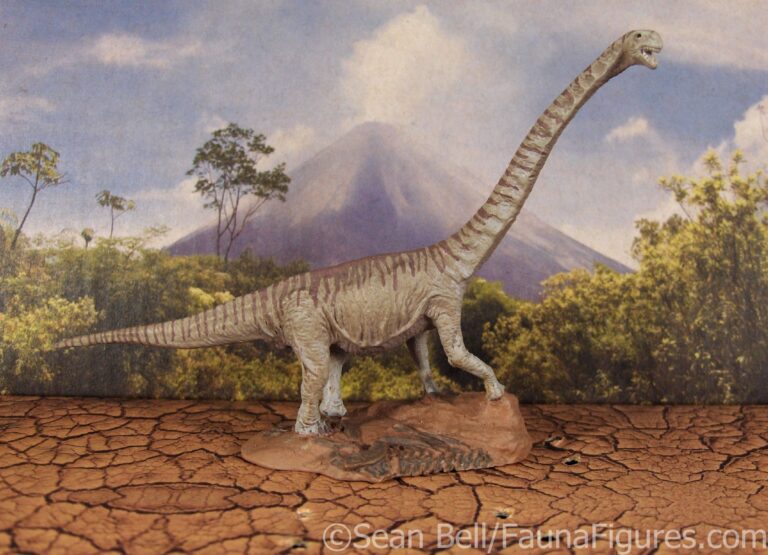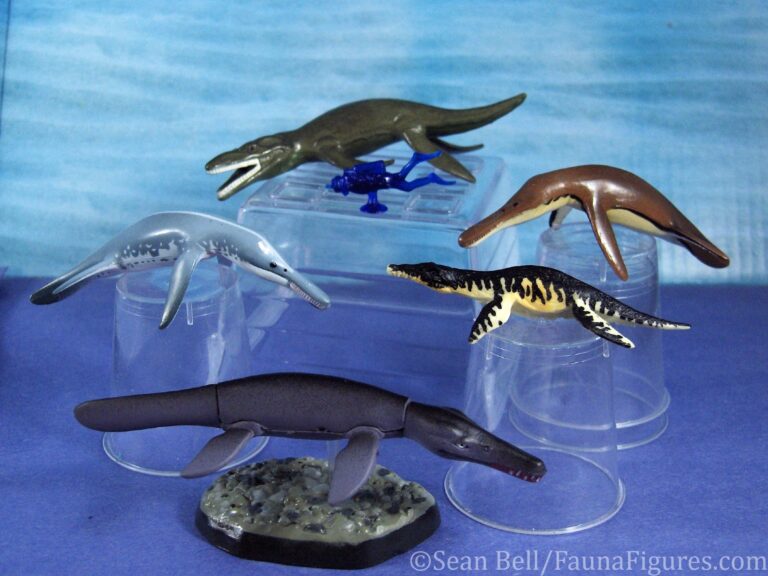So we’re back with another ‘clades’ post, and this one is a very unique one, which requires one heck of a caveat! In this case, it is figures labelled as ‘Stegocephalia’ in my collection database–informal labels, not truly clades. If I was going to discuss all of the stegocephalians, well, it would cover the entirely of every vertebrate that wasn’t a coelacanth, lungfish, shark or bony fish (etc)–or as said more eloquently on Wikipedia, the non-piscine vertebrates. So, yes, it’s a paraphylectic look at the figures I label that way. I hope the hardcore phylogenetics folks can forgive me, I’m just trying to organize my figures! Maybe someday I’ll try to reorganize the labeling a bit, but it would be a huge job.
That said, the animals that are included (in my collection) would be considered animals that kind of belong in the transition between lobe-fin fish that excludes the crown tetrapods. Some of them are more fish-like, and some of them are more amphibian-like. The name ‘fishapod’ is sort of informally given to one of them Tiktaalik, but in a way might be a good way to describe the group. They are at least familiar by name to anyone with even a passing interest in evolution and paleontology. And of course, they are underserved as figures and toys, but there are at least a few of some of the most notable ones.
Stegocephalia (as I’m defining them) are fossil animals generally known from the late Devonian and Carboniferous; most fossils seem to come from North America and parts of Europe (sometimes ones that seem quite Northern, but that’s a trick of continental drift after ~375Ma or so!) although one group (with no figures of it…) has representatives from Australia. Overall, the group is animals that have toes, being a sister-group to the closest relatives of tetrapods that have fins (Pandericthys and its ilk, of which none are made as figures because of course not)–although paired fins show up in some (but not the figures made). Which is why fishapods would make such a great common name–they’re fish-like, but the limbs are along the way to those of tetrapods! It’s perfect. In my mind anyway.
One of the fascinating thing about collecting figures from this evolutionary grade is seeing how they change over time as research and discoveries allows. The Tiktaalik models that I have show big differences in the rear limbs, reflecting how much knowledge (and publishing) changed between the Shapeways model (from 2011) and the Paleozoo model that I got at the end of 2018. Or the subtle but clear differences between the Kaiyodo Acanthostega and the Yujin versions just a few years later (roughly 2000 vs 2004), showing an animal lifting itself compared to muddling about, flattened to the ground. The Ichthyostega shows the most change in many ways, given the range of years for its figures, from the Starlux which appears more flattened and aquatic, to the more terrestrial looking COG and Kaiyodo versions. Only the weird one, Crassgyrinus seems to be more or less the same in all two interpretations that I have from Play Visions and Shapeways–but I’ve heard rumors that details on the hitherto poorly known back half might have been found, in which case we’ll hopefully see new interpretations again! These transitional animals just keep on changing (from our perspective…)
As a group, these animals are fascinating to have in a collection, at least for someone like me that wants to see a diversity of taxa and ages represented. And the benefit of figures like these to education and communication regarding evolutionary processes and science cannot be overstated–with a few other steps as figures, it can be rewarding or just downright fun to lay things out and see how much did and didn’t change over time in the family tree (there’s also whole books about that–even better, combine the two!). I would really love to see more attention paid by makers of toys and figures of this group of animals, and of animals from the era at all. As it is, most are no longer available, with only the Palezoo Tiktaalik and Prehistoric Panorama Ichthyostega (I think) still in production. There are a few super cool plush ones of various kinds and quality out there; I don’t have any but I will gladly shout out to Palaeoplushies who makes fantastic ‘plush sculptures’ (I have some others though). But we need toys and models for everybody, and hopefully someone will do it eventually.












